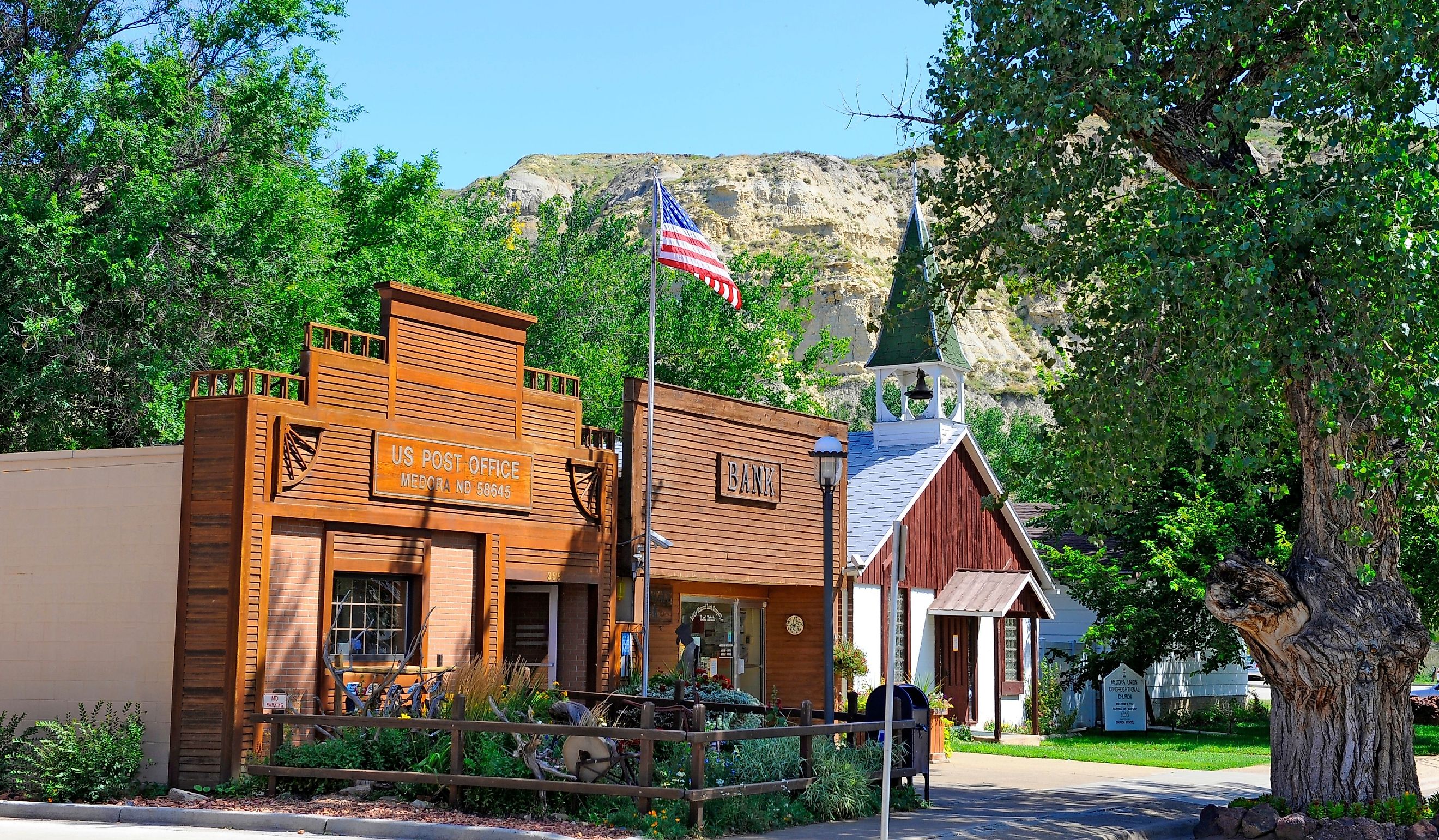
8 Old-World Towns to Visit in North Dakota
Theodore Roosevelt once said, “I never would have been president if it had not been for my experience in North Dakota.” If the great Peace Garden State can inspire one of the nation's great presidents, imagine what it can do for your family vacation. This state is a hidden treasure trove of history, waiting for those brave enough to venture beyond the “Welcome to North Dakota” sign. Home to the geographical center of North America and the historic Lewis and Clark Expedition route along the Missouri River, North Dakota’s small towns offer a blend of geological marvels and deeply rooted narratives.
The state also boasts one of the largest bison populations in the country, providing not only a glimpse of wildlife but a taste of its ranching past. From the charming streets of Medora to the bustling history of Valley City, these towns should not just be a pit stop on your road trip; they should be the final destination. These eight amazing towns of North Dakota are calling your name, and they promise a journey filled with laughter and discovery!
Medora
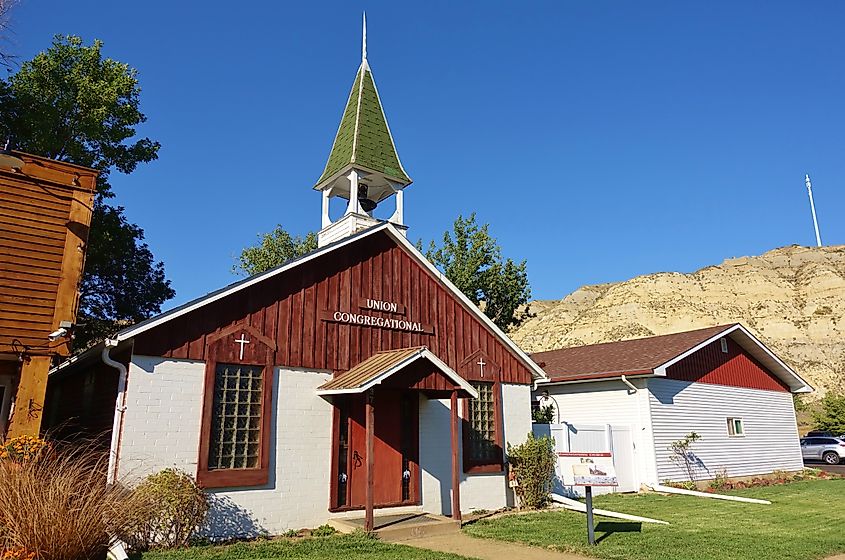
Medora is a treasure trove of history, and not just because it was founded by a French Nobleman, the Marquis de Mores, in the 1880s, named it in honor of his wife. This little town was born from dreams of cattle ranching and meatpacking, and it still carries that pioneering spirit today. Serving as the entry point to Theodore Roosevelt National Park, Medora welcomes you to explore rugged badlands and observe the wildlife that calls North Dakota home. Every summer, the Medora Musical takes center stage, an outdoor performance that honors the legacy of Roosevelt himself. It has been running since 1965, and locals will gladly tell you it’s a must-see.
Among the town’s historical landmarks, the Old Town Hall and the Marquis's former home are key highlights that will bring a touch of historical elegance to your visit. The Medora Foundation works hard to keep these sites preserved, ensuring that the past remains part of the community. While you are in town, take advantage of the town's stables and hit the Medora Trails for an adventure of a lifetime. Medora thrives on its tight-knit community and a commitment to preserving its history for future generations and for the delight of visitors.
Jamestown
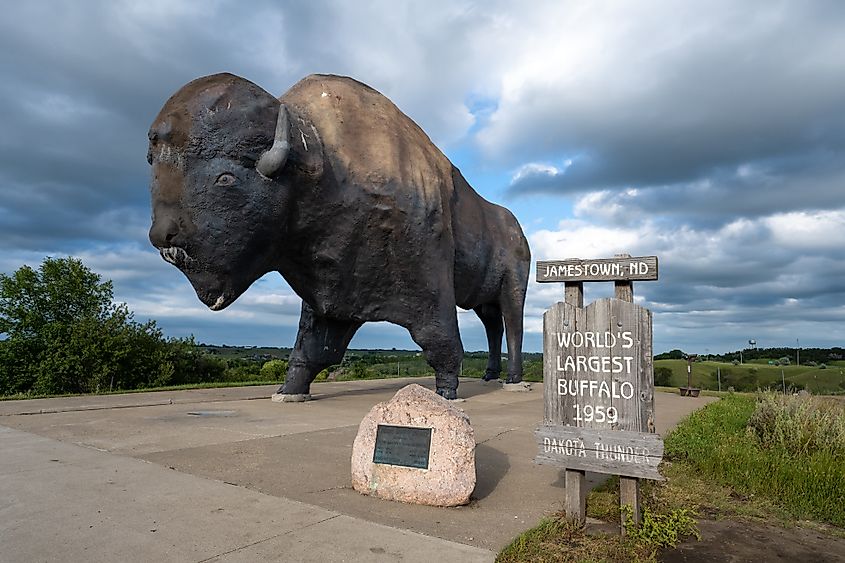
In Jamestown, the National Buffalo Museum reigns supreme, home to the world’s largest buffalo statue—a fitting tribute to the area’s ranching heritage. The historic downtown area is a walk through time, featuring buildings from the late 1800s that reflect the architectural styles of that era. The Stutsman County Courthouse, a photo-worthy marvel that was constructed in 1883, serves as a striking example of early 20th-century civic architecture.
Each year, the Frontier Village invites guests to step into the past with reconstructed pioneer structures that tell stories of 19th-century life. Numerous historical markers throughout the town detail the experiences of early settlers and the evolution of the local economy. While in town, take the time to visit the Northern Prairie Reserve, a beautiful stretch of 600 acres along the James River Valley with an abundance of wildlife, including actions to preserve the local bird species.
New Salem
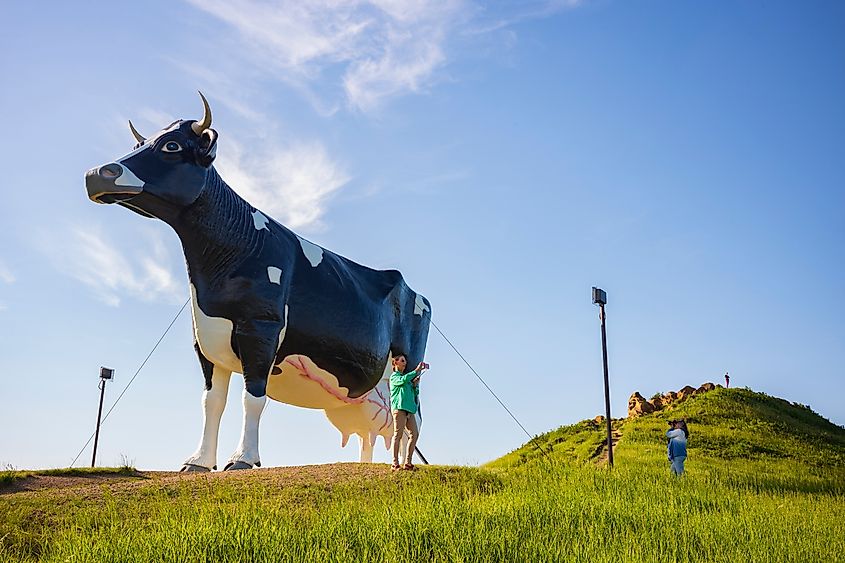
Another town established in the late 19th century, New Salem played a vital role in the region’s development, serving as a transportation hub for settlers and goods. The iconic "Salem Sue," the world's largest Holstein cow statue, stands proudly as a tribute to the area's agricultural heritage and draws visitors from all over. Meanwhile, outdoor lovers will find plenty to enjoy in New Salem, starting with the scenic trails around Sweet Briar Lake, which are perfect for hiking and birdwatching. Fishing and boating on the lake are popular activities during the warmer months, providing a serene backdrop for relaxation. Not to mention, the natural beauty is captivating, with quintessential midwestern scenery.
Additionally, the Fort Abraham Lincoln State Park, less than an hour from town, offers excellent hiking trails and historical reenactments. The town also hosts various community events throughout the year, such as the annual New Salem Rodeo, celebrating its cowboy culture. This event is great for families and demonstrates the spirit of the area in its truest form.
Rugby
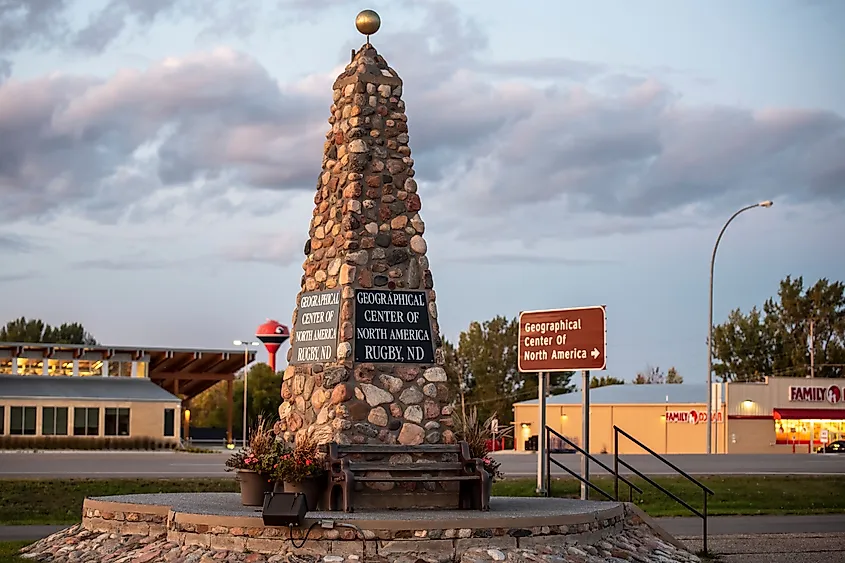
As a fun fact, Rugby claims the title of the geographic center of North America, proudly marked by a monument in its town square. Founded in the late 1800s, Rugby has several preserved buildings from its early days, including the historic Depot built in 1907. The Prairie Village Museum is a must-see, giving you a peek into early 20th-century life in the town, through its collection of twenty different buildings and artifacts.
Rugby is also home to the Northern Lights Tower and Interpretive Center, an 88 1/2-foot monument dedicated to the spectacular natural occurrence of the Aurora Borealis. Elley Park is a great spot to take the family for an afternoon picnic and play a few rounds of kickball or frisbee, while at Jaycee Park, you will find walking and biking trails that are excellent for going on a quick run with the family dog. No matter what hobby you prefer, the town of Rugby has just what you need.
Williston
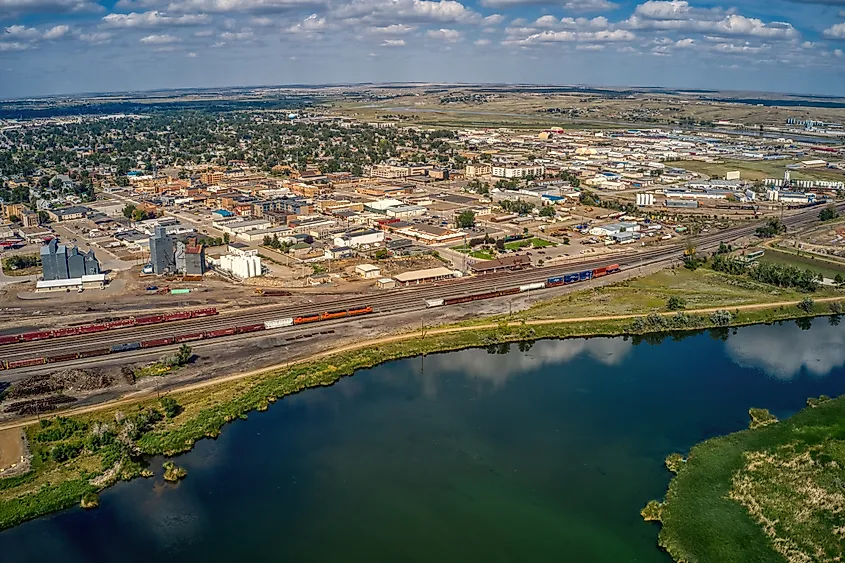
Not far from the banks of the Missouri River, Williston sprang to life as a vital railroad town in the late 1800s, facilitating trade and transport across North Dakota. Those tracks once connected this growing community to the broader world, helping it flourish. Today, the Williams County Historical Museum demonstrates the town's journey with artifacts and exhibits detailing the lives of early settlers and the local economy's development. Each display tells a story of determination and adaptation, giving visitors a taste of the past.
The Nearby Missouri River is a local favorite for boating, fishing, and swimming, adding a plethora of exciting outdoor offerings to the town. The Frontier Museum further enriches the experience with preserved buildings that depict pioneer life and the region’s early industry. The local Davidson Park is a child's paradise, equipped with an extensive and impressive jungle gym as well as a splash pad.
Devils Lake
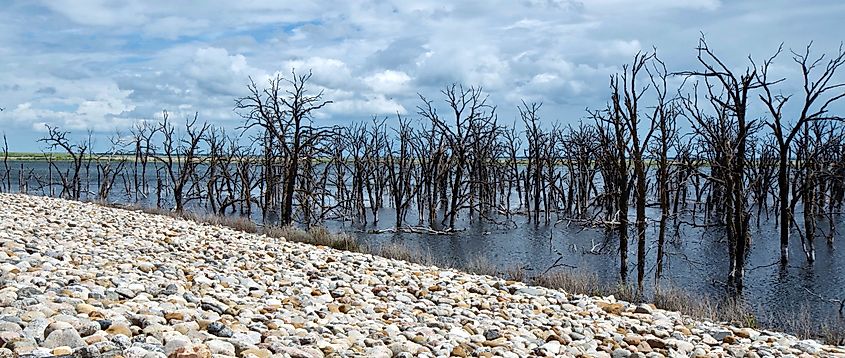
Devils Lake has deep roots, having served as a vital trading post for Native American tribes and early settlers since the 19th century. The downtown area features a collection of historic buildings that reflect the architectural styles from its founding era, each with stories that add depth to the town’s identity.
During the railroad expansion, Devils Lake became a key hub, with remnants of that history still visible throughout the area. Historical markers scattered around town provide insights into the lives of early settlers and the community's evolution while also making for a fantastic sport to snap a quick selfie or group photo. Devils Lake is home to residents who deeply value their historical traditions, making it a worthwhile stop for anyone interested in the stories that shaped this part of North Dakota.
Minot
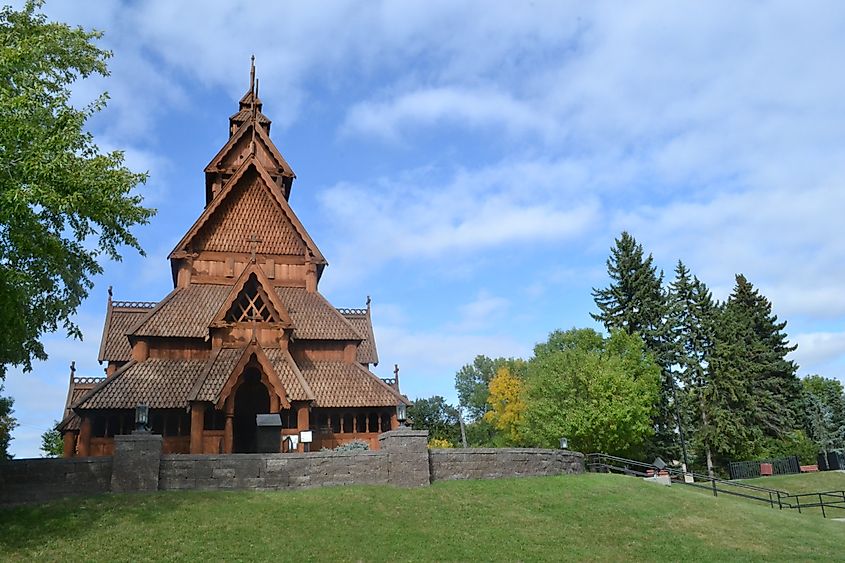
Founded in 1886, Minot showcases several historic districts filled with buildings from the late 19th and early 20th centuries. This blend of old and new makes exploring the town feel like a journey through the past. A visit to the Minot Railway Museum is essential for those interested in transportation history. This museum preserves artifacts and displays that tell the story of the town’s railway development, highlighting its importance to the region. The historic downtown area is still home to the Old Post Office and several buildings listed on the National Register of Historic Places, each with its narrative that hints towards the development of this town.
Minot’s annual Magic City Discovery Center, which focuses on local history, provides children with engaging educational programs to enrich their minds and stimulate their interest in STEM. The Scandinavian Heritage Festival is a vibrant celebration of the contributions of Scandinavian immigrants, reflecting the diverse heritage of the community. Additionally, the Gol Stave Church Museum, located in the Scandinavian Heritage Park, is a marvel that is truly the gem of this town. It is the kind of structure where Viking heritage meets the Christian faith in a truly one-of-a-kind way.
Valley City
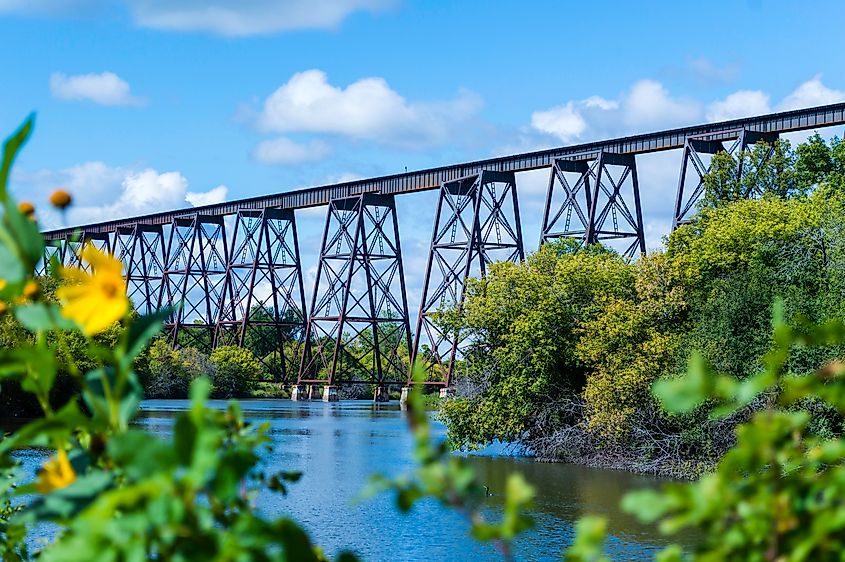
Valley City holds a significant place in history, often referred to as the "City of Bridges" due to its picturesque structures spanning the Sheyenne River. Established in the late 1800s and ever since it has played a crucial role in the state's development. The town celebrates a long history of farming and agriculture, shown at the Barnes County Historical Society, which details local farming history.
Lovers of the great outdoors make Valley City a stop on their annual travel list for its abundant activities. The Sheyenne River Valley Scenic Byway is where you will find stunning views that are great for those who enjoy scenic drives or cycling. Fishing and kayaking are popular on the Sheyenne River, with ample access points for adventurers. Less than one hour from town is the Fort Ransom State Park, which features hiking trails and picnic areas, perfect for family outings. Lastly, the town’s historic bridges provide great spots for photography and painting, thus blending outdoor recreation with a taste of history.
Exploring the small historic towns of North Dakota is like walking through a living museum, and every corner reveals a story waiting to be told. From the charming streets of Medora, where the spirit of Theodore Roosevelt radiates through the town, to the vibrant arts scene in Minot, these towns show off the state’s rich heritage and community spirit. Each destination offers its own blend of history and outdoor adventure, whether it is fishing in Devils Lake or hiking the scenic byways of Valley City. These towns are not just places on a map; they are the heartbeat of North Dakota. A visit to any one of them promises not only a glimpse into the past but also a chance to experience the warmth and hospitality that defines the state.











